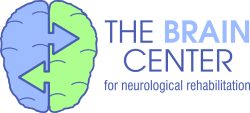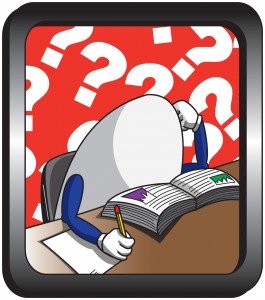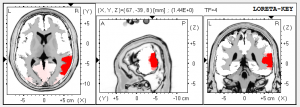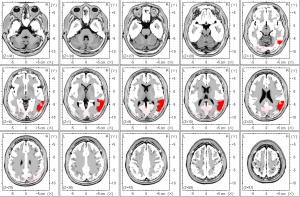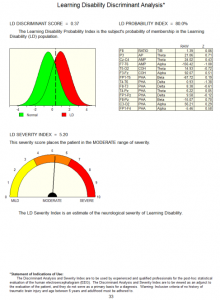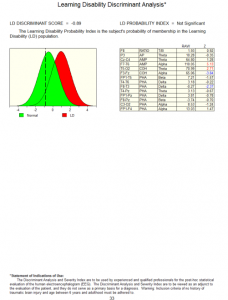Learning Disabilities
Learning disabilities result from disruptions in the networks of the brain that process information. This can interfere with a person’s ability to learn, read, write, perform math problems, and to be able to organize information. It can also make it very difficult to communicate properly or even understand and interpret social cues. Learning disabilities can surface when different parts of the brain have problems coordinating with each other efficiently and effectively. When this happens the brain is unable to process information properly.
With the help of a brain map, we can evaluate the activity of the brain networks that are vital for learning. This will allow us to be able to look for the reason for your disruption. Below you will see a portion of a brain map of one of our patients with a learning disability. Green represents areas of the brain that are functioning within the normal range. Red/Orange indicates a dysfunction in the brain that’s concerned with information processing for reading.
With a Brain Map we can now see the problem then correct it
Click on image to enlarge
Once we see the basis of the problem, we are then able to target that area for change with the help of neurofeedback brain training. Neurofeedback can help with learning disabilities by training the various areas of the brain that is relevant to learning or executing skills such as math, reading, auditory and visual processing. It can help develop the harmonization and communication between different areas of the brain. It can also improve timing in the brain which has a major impact on one’s ability to learn. The above brain map shows an abnormal amount of activity on the right temporal and occipital regions. These abnormal areas can be trained via neurofeedback to function normally. Below is the same person’s brain map with various slices shown.
Click on image to enlarge
How can Neurofeedback help?
Neurofeedback works by teaching certain parts of the brain how to produce slower or faster electrical activity depending upon its need. It can also train different parts of the brain to coordinate more or less with each other. During a neurofeedback session, we are able to observe the various brain wave patterns while it is happening. The individual simply sits in a comfortable chair and “plays” a video game-like training which is controlled by his or her brain wave activity. So if the individual is shown to need an increase in fast wave frequencies and a decrease in slow wave frequencies in the left frontal lobes than the individual will earn points in the “game” they were playing with their mind. The computer can also allow the individual to receive more points or soft musical sounds that are pleasant to the ear when two parts of the brain are firing in sync with each other. When the brain wanders, the desired pattern, we want to see happen, fails to be achieved and the action in the game stops. The brain then has to find a way to achieve the desired pattern, so it can earn more points to win the game. The brain does this reflexively without even making a conscious effort. Finally, after a certain amount of sessions the brain learns how to produce the desired pattern on its own.
Below you will see a learning disability discriminant analysis. It is a part of the brain map that determines the probability of one having a learning disability. Once we know which areas are involved with our learning disability, it makes it much easier to care for. In this case, this person had an 80% chance of having a learning disability with a 5.2 % severity.
Click on image to enlarge
Original analysis taken before treatment
Click on image to enlarge
Analysis performed after 42 neurofeedback sessions
